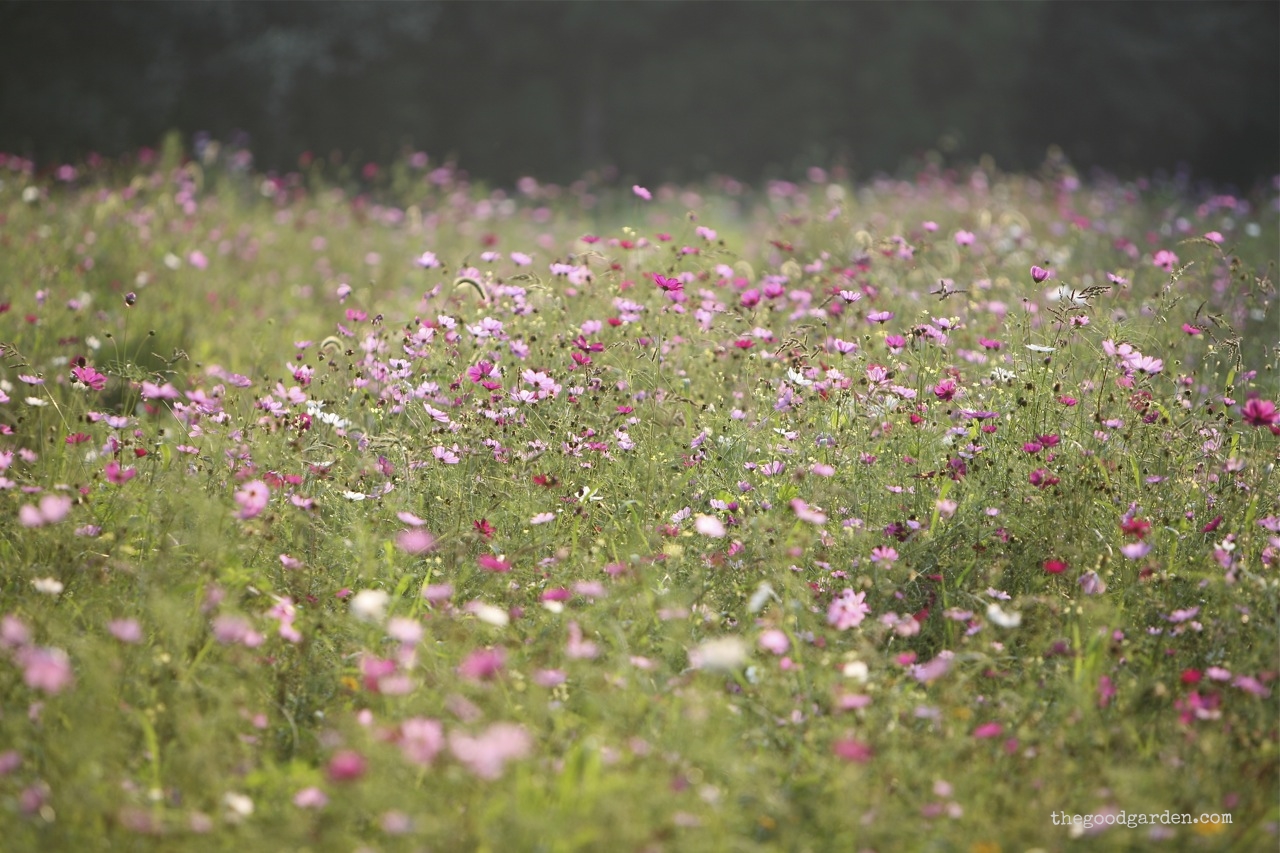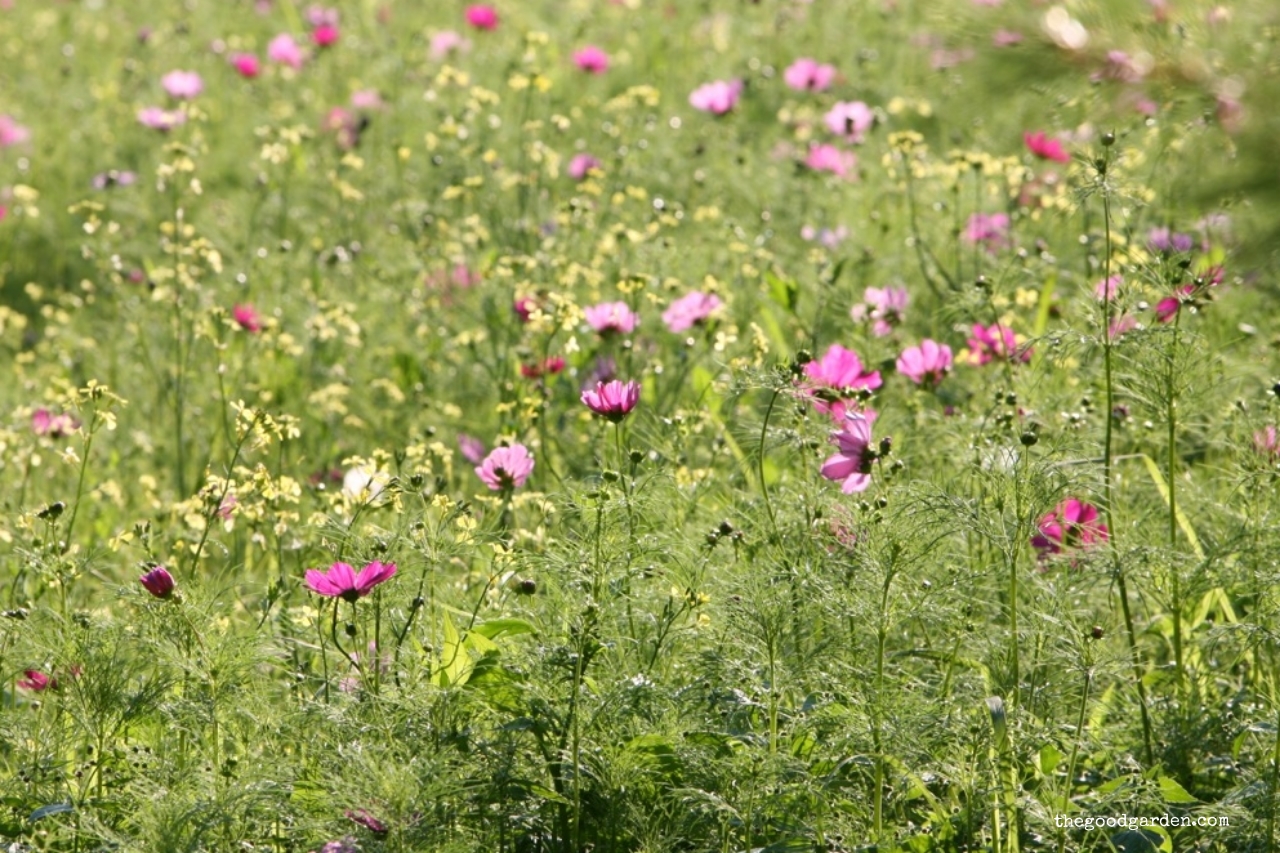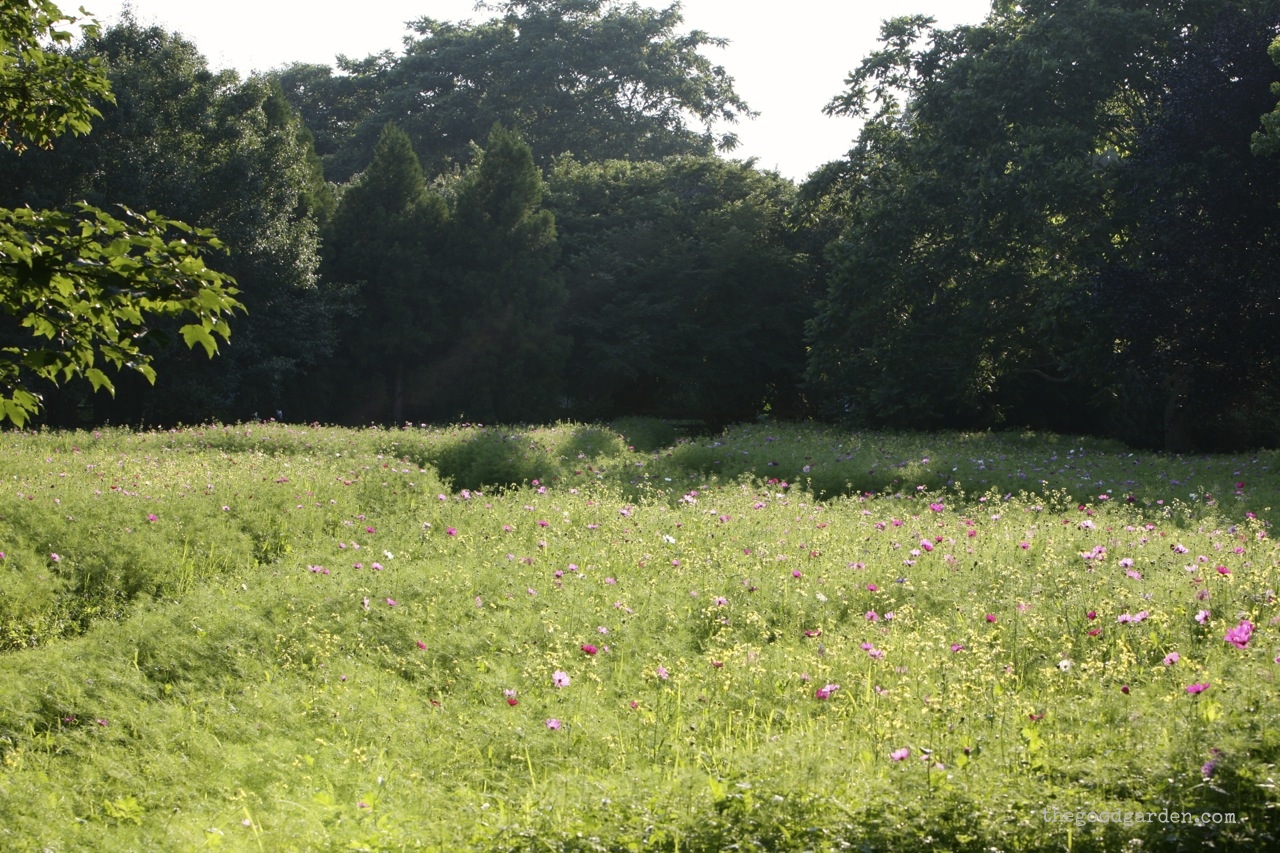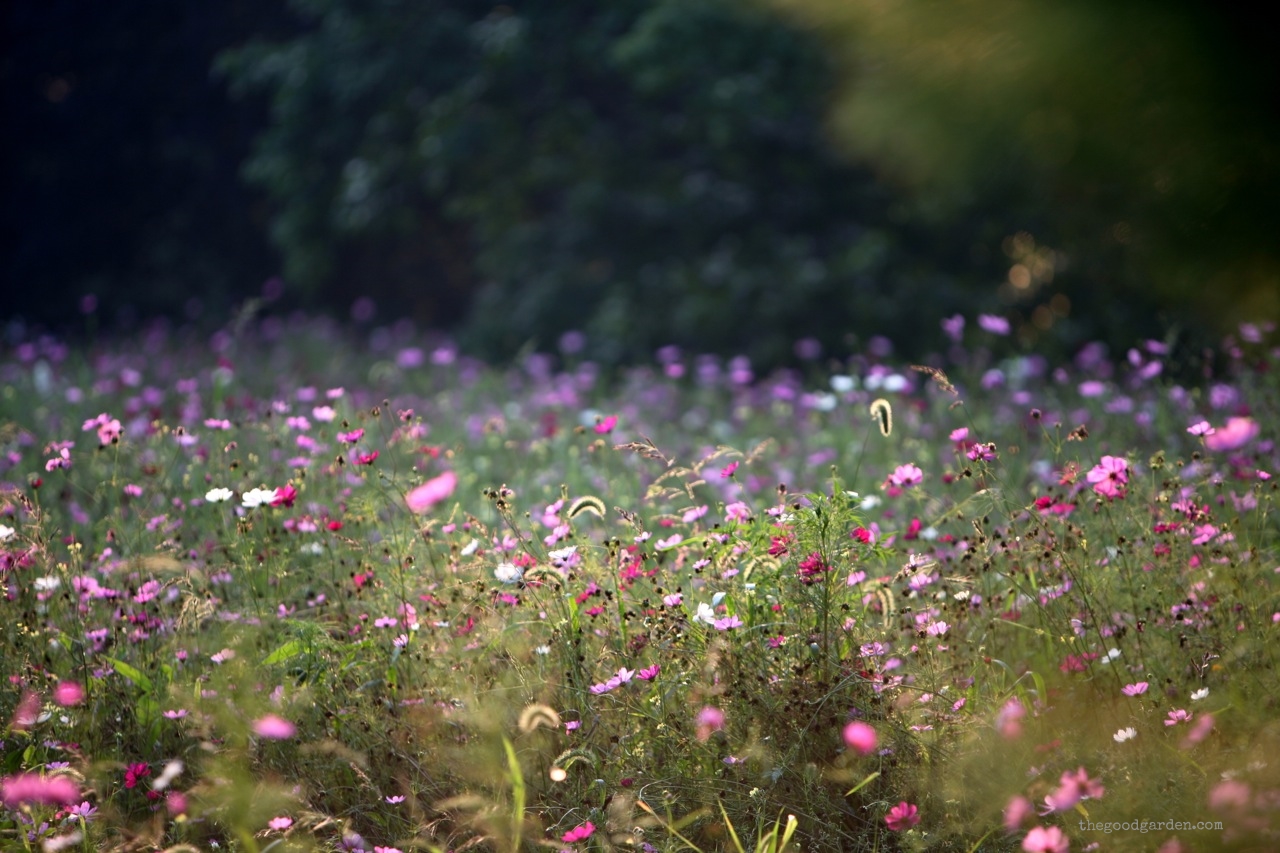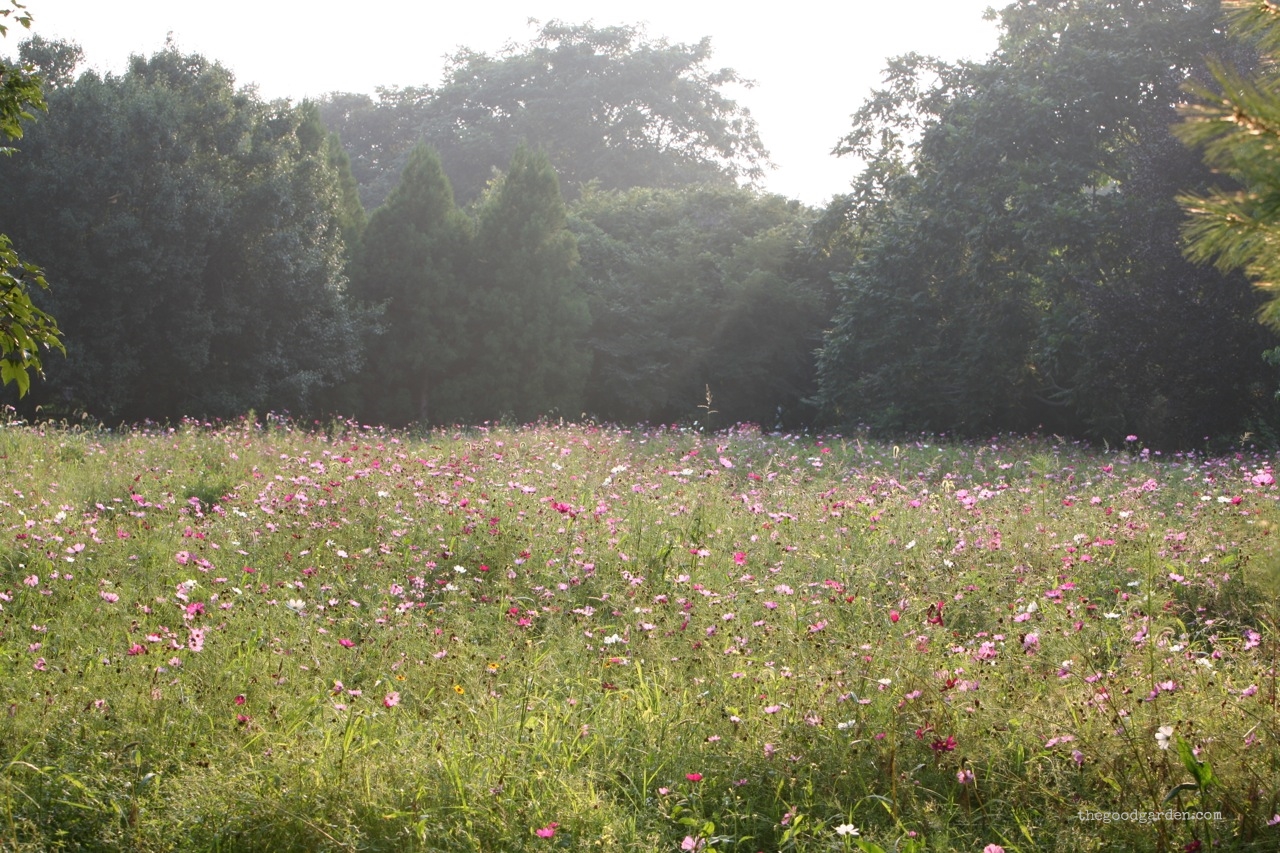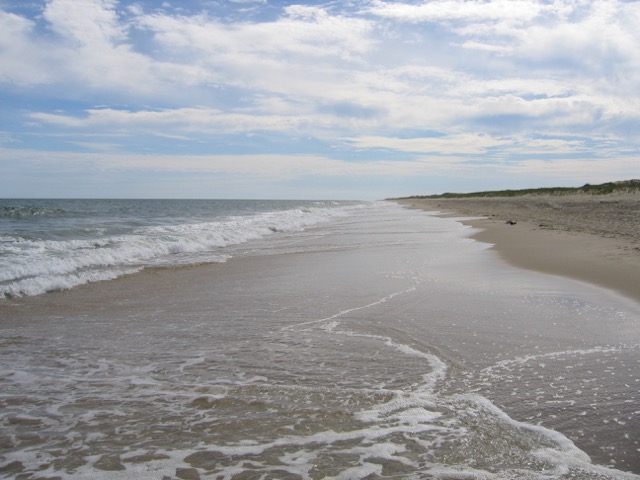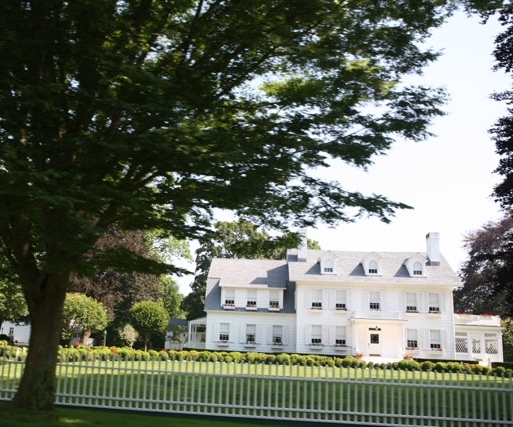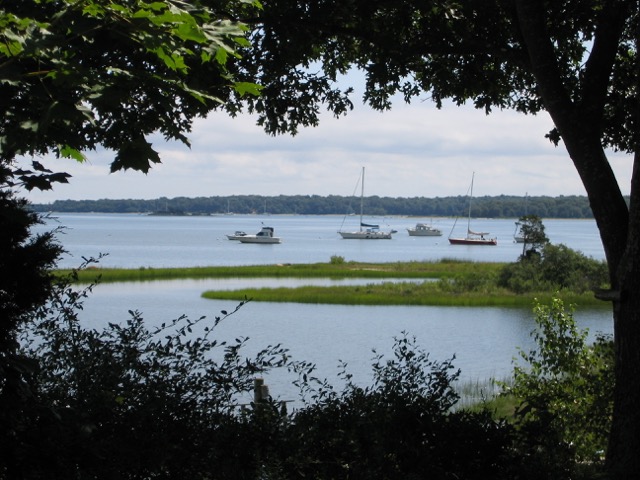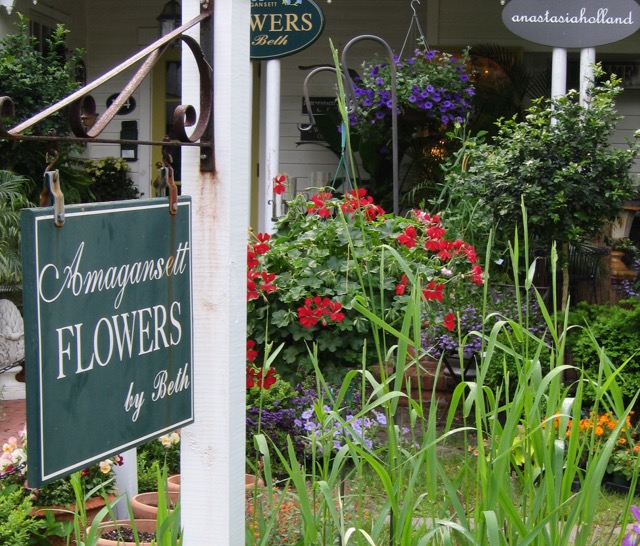I will never forget this formal, wild meadow garden in East Hampton, NY.
The Hamptons are famous for village lanes lined with mature sycamores, privet hedges, and arborvitae. Such plantings mark the separation between the private and public worlds. They provide shelter and privacy to personal gardens; shade and coziness to public spaces. Getting around means passing through these delightful lanes.
While walking back from the beach along one such lane, dense green walls on either side gave way to a burst of light and color. The setting sun streamed through this stunning meadow seen above; thousands of cosmos were backlit so they appeared to be floating paper lanterns.
This garden has the layout of a formal parterre, a geometric area divided by symmetrical paths. Its structure could easily fit into a French formal garden. A square space is framed by evergreens. Straight, criss-crossing paths meet in the middle of it to form a series of triangular beds filled with flowers. This formality unifies the garden, giving it rhythm and consistency.
What made this garden special was how the gardener’s plant choices and pruning restraint softened its structured layout. The evergreens were left to grow naturally; mown grass was used in the pathways instead of gravel; cosmos were selected for the flowerbeds and fell freely into the paths. A few grasses and daisies were allowed to pop up now and then, further softening the scheme. The power of this garden comes from its combination of formality, and what I suppose was inspiration from the wild.
Fashioned in the arts and crafts style, this garden is one room in a series of gardens: more formal outdoor areas near the house provide space for entertaining; and this garden in the far corner is looser, more naturalistic.
As I plan my fantasy garden, a formal meadow like this one will fit in beautifully, especially since I will have limited space. I can create a defined area with paths for easy access to the flower beds, and at the same time enjoy the beauty and serendipity that only nature can provide. It will also face west so that the setting sun can wash over it.
See more arts and crafts gardens here.
Founded in 1648, East Hampton is one of the earliest English settlements in America. This area is known for beautiful beaches and bays, historic (and modern) homes, design shops, and wonderful garden centers.

